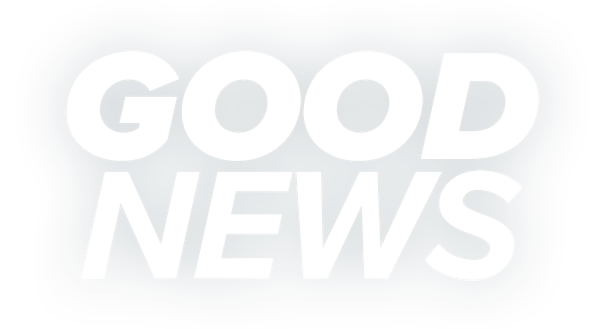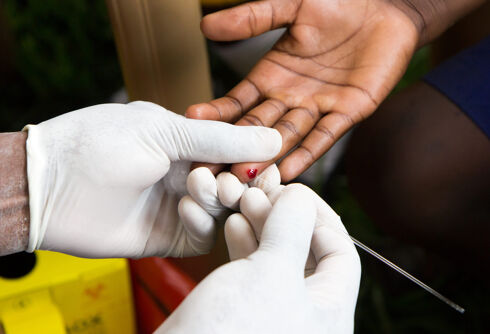It’s a common misconception that queer people can only find community in bustling metropolitan cities. It’s not surprising people think this way, given how the vast majority of queer experiences are represented in TV and film. But the HBO reality series We’re Here offers something different and essential – an intimate look at the lives of queer people in small towns and cities across America. In the previous three seasons of We’re Here, the show has visited communities in places like Evansville, Indiana; Spartanburg, South Carolina; Farmington, New Mexico; and St. George, Utah.
And it explores them all with a delightfully draggy twist.
Related:
This unlikely friendship is changing a conservative town
Plus: The rise of the queer power couple & fall of anti-trans politics
We’re Here follows professional drag queens – in the first 3 seasons, it was Bob the Drag Queen, Shangela, and Eureka – as they connect with queer people and transform them into drag queens for special one-night-only shows. Previous seasons have had each episode taking place in a different town or city. This time around, in season 4, there are just two states in focus: Oklahoma and Tennessee.
Never Miss a Beat
Subscribe to our newsletter to stay ahead of the latest LGBTQ+ political news and insights.
The slight change in format is a hugely successful choice, allowing for a far more intimate exploration of places where it can be terrifying to live openly as an LGBTQ+ person.
Tennessee takes the stage in the first three episodes, with a focus on the city of Murfreesboro. The city made headlines for banning displays of sexual conduct – which includes “homosexuality.”
The season opens with a drag performance from all-new hosts Priyanka, Sasha Velour, and Jaida Essence Hall (who you may recognize from Canada’s Drag Race and RuPaul’s Drag Race – all three queens won their respective seasons). It’s the kind of performance that would bring down a gay bar, but their number in a straight bar in Tennessee offers little more than a smattering of applause. The performance immediately reminds us that drag does not have anything close to universal appreciation; various shots of the audience shows many seem confused as to what they’re watching.
The magic happens when we see the queens interacting with everyday people, helping them find their inner confidence and new ways to love themselves. It’s refreshing to see queer people from all walks of life and of all shapes and sizes find a sense of purpose and a sense of community through drag. The show wisely keeps the focus on small-town life; the queens never suggest moving to a big city to find joy. It’s all about embracing who you are where you are, no matter how challenging it may be.
When it’s about the drag itself, We’re Here is transcendent. So much of this season explores the furor that’s been whipped up so aggressively around drag and drag performances. The hosts converse directly with the very people who believe their careers as drag artists are damaging society. They go to town hall meetings and speak with those against their right to dress in drag. There’s a common thread in all of these conversations: None of these people have ever seen a drag show with their own eyes.
For those watching who’ve never been to a drag show themselves, We’re Here delivers plenty of them. With each person performing in drag for the first time, the feelings of joy and transformation practically leap off the screen.
While the subjects who perform in drag are often queer, that’s not always the case. In the first episode, we meet Bradford, a straight man and professional musician, who is transformed into a drag queen. His reasons for getting into drag are personal: His children are both queer.
Watching Bradford (drag name Wynonna Dudd) sing on stage in full drag is enough to warm your heart, but it’s the reactions from his family that perfectly express what makes We’re Here such a valuable show.
His kids are overwhelmed with joy as tears stream down their faces, and they scream and cheer with delight. Their father is on stage – and on television – boldly proclaiming his undying love for his family. It’s a perfect, heartwarming queer moment, and its happening in Tennessee, which is known for passing some of the country’s harshest anti-LGBTQ+ legislation.
“If every queer kid got to have parents like you and mom, the world would be a much better place,” Bradford’s son tells him, and you truly believe he’s right. And through it all, there’s a question that sticks at the back of your mind: This is what people are so angry about?
The show’s name, We’re Here, is more than a title. It’s a statement. The queer community is here, and it’s not going anywhere.
And we’re everywhere.
This show is a stunning metaphor for the queer experience: It can be tough, and it can feel like the world is against you. But when you find those who love you, accept you, and embrace you, there’s no stopping us. And sometimes, drag is that special art form that can take you from tough times to beautiful ones.
Don't forget to share:
















